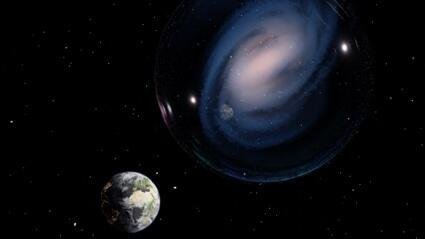Our star, the place where we live with the Sun and billions of other people, Milky Way revealed its mystery Thanks to the tireless work of astronomers and the technology of new telescopes, both terrestrial and space-based, that use different types of radiation to capture images of our galactic backyard that we were previously unaware of.
Recently, two studies have been published, one based on information from ESA’s Gaia spacecraft and the other on observations from the NASA/ESA/CSA consortium’s James Webb Space Telescope (JWST). Reveals surprising new insights that help continually update astronomy’s observational data.
The first study, published in the journal Astronomy and Astrophysics, A significant portion of stars escaping from the Milky Way, pursuing a “solo career” in space. Second study reveals We have a “similar” galaxy that fascinates astronomers, It contradicts all knowledge about barred spiral galaxies, not only because of their similarity to our astronomical system, but also because they formed shortly after the Big Bang.
Galactic stars O and Be escape the Milky Way
Although it was already known that the Milky Way could not hold all its stars, for the first time a team of astronomers decided to explain this by observing the largest “leaks” to see if they could understand how this phenomenon occurs.
To do this, they used the Galactic Catalog of O-Type Stars (GOSC) and the Be Star Spectrum (BeSS), which are all massive. The authors also worked with data from the Gaia probe, launched by the European Space Agency (ESA) in 2013, to map billions of stars in the Milky Way. and create a meticulous three-dimensional catalog of your positions and movements.
They measure the velocity distribution in a particular star field to understand whether a star is running away. If the star doesn’t align with the overall velocity distribution that should reflect the galaxy’s rotation, they start tracking it.
How many runaway stars have been discovered in the Milky Way?
By comparing Gaia data with GOSC and BeSS catalogues, researchers obtained 417 O-type stars and 1335 Be-type stars. Of the total, 106 runaway O-type stars were found (25.4% of GOSC), in addition to 69 Be stars in the same state (5.2% of BeSS). There are two theories explaining why massive stars predominate among the escaped stars: the dynamical ejection scenario (DES) and the binary supernova scenario (BSS).

The BSS scenario proposes the escape of OB stars, which often form binary pairs. Occurs when one explodes as a supernova and blows the other out. If this is the case, the surviving star receives enough energy “push” to escape from its former partner, which will collapse into a neutron star or black hole.
A dramatic explosion does not occur in the DES scenario. Dynamic ejection occurs when a star from a compact and densely populated region is subjected to gravitational interactions with other celestial bodies. This can occur between binary stars and single stars, as well as in encounters between two binary pairs.
A galaxy similar to the Milky Way in the Early Universe
An international team of astronomers led by researchers from the University of California, USA, has detected a galaxy similar to the Milky Way through JWST. Although it is a barred spiral galaxy like ours, it is the most distant example of its type ever observed..

Until now, there was consensus among astronomers that so-called barred spiral galaxies (those with a central bar of bright stars at their center) began to exist only after the Universe reached half its current age, estimated at 13.8 million years. Despite, “This galaxy, called Ceers-2112, formed shortly after the Big Bang.”co-author Alexander de la Vega said in a statement.
De la Vega said Ceers-2112’s central bar is a long structure of stars and matter that extends from one end of the galaxy to the other, where characteristic spiral arms appear to emerge. The astronomer concludes that its presence in ceers-2112 indicates that “galaxies are maturing and becoming organized much faster than we previously thought.”
The importance of the discovery of the Ceers-2112 galaxy
De la Vega says that central bars in galaxies can form spontaneously due to instabilities in the spiral structure or gravitational interactions with a neighboring galaxy. Since galaxies were inherently unstable and chaotic after the Big Bang, “It was thought that rods could not form or persist for long in the galaxies of the early Universe.”.

But the discovery of ceers-2112 showed that rod formation could occur much sooner: “in about a billion years or less,” de la Vega estimated. For him this means: Some aspects of current theories of galaxy formation and evolution need urgent revision.
The first thing to consider is that some galaxies became stable enough to host bars very early in the history of the cosmos. Second, ceers-2112 is living proof that bars can be detected even when the Universe was very young and galaxies were smaller. The expectation is that more bars will be detected in future studies of the young universe.
Did you like the content? So, stay up to date with all the discoveries about our galaxy at TecMundo and get the opportunity to see a 10 terabyte photo of the Milky Way.
Source: Tec Mundo
I’m Blaine Morgan, an experienced journalist and writer with over 8 years of experience in the tech industry. My expertise lies in writing about technology news and trends, covering everything from cutting-edge gadgets to emerging software developments. I’ve written for several leading publications including Gadget Onus where I am an author.













